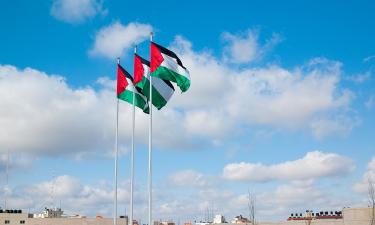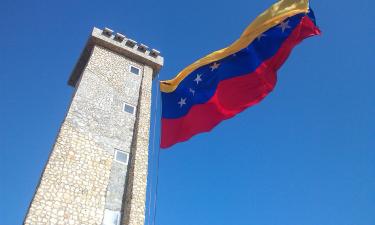American Pilots Rescued by Russians
The story has been completely forgotten in Russia
On October 28th 1978, Russian sailors risked their lives and saved ten American pilots from the spy plane Alpha-Foxtrot 586 (P-3C Orion) that sank in the north of the Pacific Ocean. 
“The rescuing operation, foreign newspapers wrote at that time, deserves the respect of every American." Let's not talk about the US. As far as Russia is concerned - only the direct participants of the operation can recollect something about the outstanding accident nowadays. No one has even thanked sailors and fishermen after the operation was completed - neither the Soviets, nor the Americans.
One of the rescuers said, the Americans had sent a lot of awards and medals to them, but the post was not working well at that time and the parcel was lost. Moscow was closer than Kamchatka and the Soviet defense minister was decorated with the Golden Star of the Soviet Union Hero.
America decorated the rescued pilots with Air Force medals, the dead pilots were honored like national heroes, they were buried to the sound of the national anthem. Three American pilots contacted their Russian saviors only two years ago: they handed over letters to Vladivostok through the US Consulate General. Of course, it does not go about decorations and honors, it goes about the memory.
We have recently met one of the participants of those events, captain in retirement Mikhail Khramtsov. Twenty-five years ago he was the commander of the 173rd brigade of anti-submarine vessels in Kamchatka. He commanded the rescuing operation.
"They woke me up at night on alarm. Captain Shtyrov said on telephone: "Prepare the Retivy boat for battle and navigation urgently. You will go to search and rescue American pilots. The telegram has already been sent to you. You have been appointed the commander of the rescuing operation."
"As soon as I boarded the vessel, Vice Admiral Klitny contacted me. He informed me of the crashed Orion plane of the US Air Force. The American government has addressed to the Soviet Union with a request to render the assistance in searching and rescuing the crew of the plane. The nearest American boat was 24 hours far from the site of the accident, the nearest US army base was almost 700 miles far.
"The accident happened a week after the USSR and the US had signed the joint agreement about saving the distressed on water. The Retivy boat went into the sea in 30 minutes. We had two medical service officers on board, one of them was an experienced surgeon. It was a very stormy and rainy night - we could not take tugging boats because of the weather. We were taking a great risk, but it wasthe defense minister who had ordered to conduct the operation.
"The farther we were sailing into the sea, the stronger the storm was becoming. It took us eight hours to reach the searching site. The aircraft drowned - we had no doubts about it. We also realized that it was almost impossible to save anyone of Orion's crew. It is hard to find people at sea in good weather during the daytime, but we were working in stormy weather at night.
"Orion's left engine went on fire, the crewmembers could not extinguish it. They could either continue the flight (it would have led to an explosion) or land on water. The American pilots chose to do the second. The plane went to the bottom in several minutes. The waves were eight meters high, the wind was stormy, the water temperature was four or five degrees above zero. The pilots had been waiting for salvation for 12 hours.
"Eventually, the American pilots had been saved. The Mys Senyavina fishing boat was the closest to the location of the accident. The fishing boat had to do very complicated maneuvers not to let the wave turn over the boat. They retrieved 13 pilots - three of them were dead. Two pilots, including the commander, drowned with the plane. The doctor rendered the medical aid to the pilots - they were given dry clothes and warm blankets.
"As soon as the operation was over, another American Orion aircraft that was leading us to the site of the tragedy transmitted a wireless message to us, asking us to turn to the east, toward the American naval base. Another US boat appeared soon with the same requirement. I had to ask the nuclear submarine to surface and they left us alone.
"It took us almost a whole day to return to the port. The Americans were hospitalized in a very good hospital, they had color television in the wards. They said that they liked the Russian borsch very much (the beet soup). Several days later, the Americans took an airplane to Khabarovsk and then they left to the USA via Japan. It was rumored that the American pilots were exchanged to Soviet spies caught in the US."
Two years ago Mikhail Khramtsov and several other sailors received letters from the pilots - they expressed their gratitude and appreciation. Mikhail wrote a letter in response to find out some information about other pilots. The answer has never been received. Mikhail thinks that there was probably the nuclear weapon on board the Orion plane.
When in retirement, Mikhail wrote a book titled "From Kamchatka to Africa." In the book he told the story about the crashed American aircraft and the saved pilots.
Tamara Kaliberova
Subscribe to Pravda.Ru Telegram channel, Facebook, RSS!




